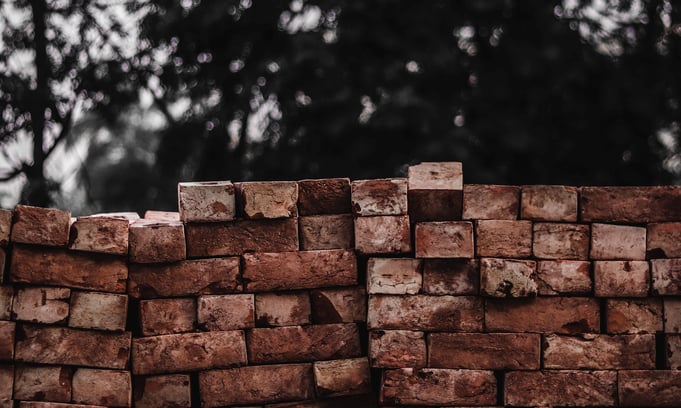
The EU have downgraded Barium Carbonate from "Poisonous" to "Harmful If Swallowed". However, still today it is treated as a toxic material in several different countries over the world. In any case, its reputation as the most helpful additive for the withdrawal of salt scumming from clay bricks and tiles is unaltered. For those countries where barium is restricted, or because of increments in price and lower availability, producers must search for other options.
WHAT IS SCUM?
First, I think we have to explain what scum or scumming is. The unattractive scum is a surface deposit found on clay bricks and tiles. It shows up right after firing, and avoiding it is key.
There are two types of scum:
Dryer scum
Scum is created during the drying process. Soluble salts inside the raw materials are conveyed to the surface as the water is being evaporated. It can also be caused by sulfurous gasses inside the dryer atmosphere creating these soluble salts. As a rule, these sorts of salts from drying do not become clear until after firing.
Kiln scum
Scum formed during the firing process in a similar way to the above mentioned, however the essential driver is usually by sulfurous gasses in the furnace atmosphere.
Scumming is caused, in this way, by soluble salts either present in the raw materials or formed during the production process. Usually, scumming originates from soluble sulfates (particularly those of calcium, sodium, potassium and magnesium of which calcium is the most frequent). Every one of these salts will give a whitish scum which is unattractive on red or dark coloured bodies.
COMBATTING SCUM
One of the fundamental strategies to battle scumming is the use of additives that added to the clay mix they use their chemical or physical properties to eliminate or prevent scumming.
These additives work mainly in one the following ways:
- Rendering the soluble salts insoluble by direct precipitation (the most well-known procedure inside the business).
- Contending with different constituents for sulfurous gasses and forming insoluble sulfates.
- Helping scum decompose at low temperatures, thus giving a clear scum.
- Changing physical properties making the salts less inclined to show up on the surface.
It is important to say that the impact of any additive is not always the same as It may be influenced by different parameters like:
- The composition of the crude materials themselves, aside from the soluble sulfates, as certain clays respond well to anti-scumming additives while others do not. Sodium Chloride can make certain added substances less useful.
- The manufacturing process and molding in that those utilizing little water may give less scumming opposed to techniques which use more water - even with similar clays. The contact time of the added substance can also be vital, meaning that the longer contact time the better.
- Firing and drying conditions. Quicker drying is generally more effective than slower. Hard firing or shorter firing conditions will mostly get rid of any scum formed. Likewise, the sort of kiln and fuel used are pertinent variables.
The above components are significant whether clay additives are used or not, however they all may contribute; while one additive might be useful under specific conditions, there is no all-embracing additive.
ALTERNATIVES TO BARIUM CARBONATE
After clarifying what is scum and why it forms we have to ask, what added substances, other than barium carbonate, are accessible?
- Barium chloride
- Sugars
- Dextrin
- Starch
- Molasses
- Sodium based compounds
- Calcium based compounds
- Ammonium based compounds
- Various earth conditioner blends and biopolymers
Considering these factors the use of clay conditioner blends/biopolymers have been proven to be able to replace sulphate containing clays, reduce water demand and as such speed up drying times (amongst a number of other benefits) with a lower addition rate than barium carbonate and in some instances at a much lower unit cost.
HOW TO SELECT THE RIGHT ADDITIVE
The removal of scumming is not an exavt science, and as mentioned, now and again even the use of Barium Carbonate cannot be depended upon as 100% effective. Hence, when you consider replacing Barium Carbonate, either ask your supplier or your internal laboratory to conduct tests of your clays for total sulfate levels. Based on these values, your supplier should be able to give a suggestion of products that are most suited to your production process and clay. Depending on which additive you use you may not only get rid of scumming but also improve production output, yields and reduce your production costs.





